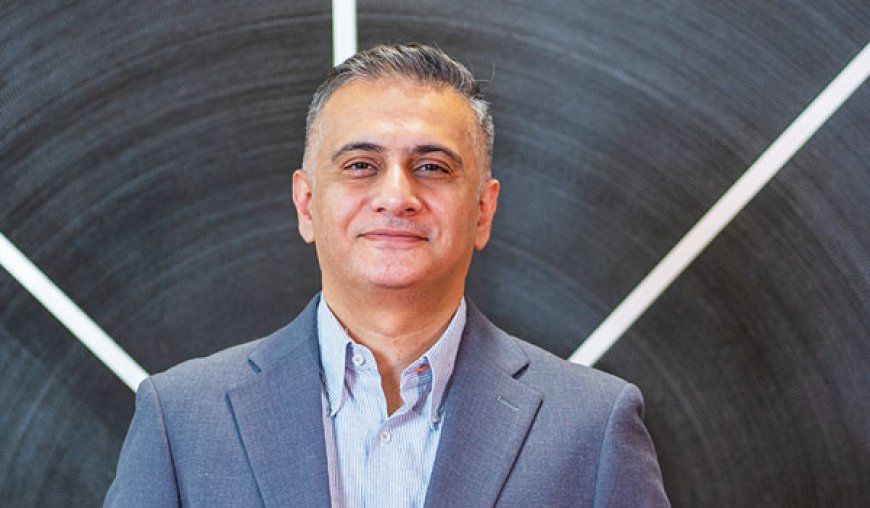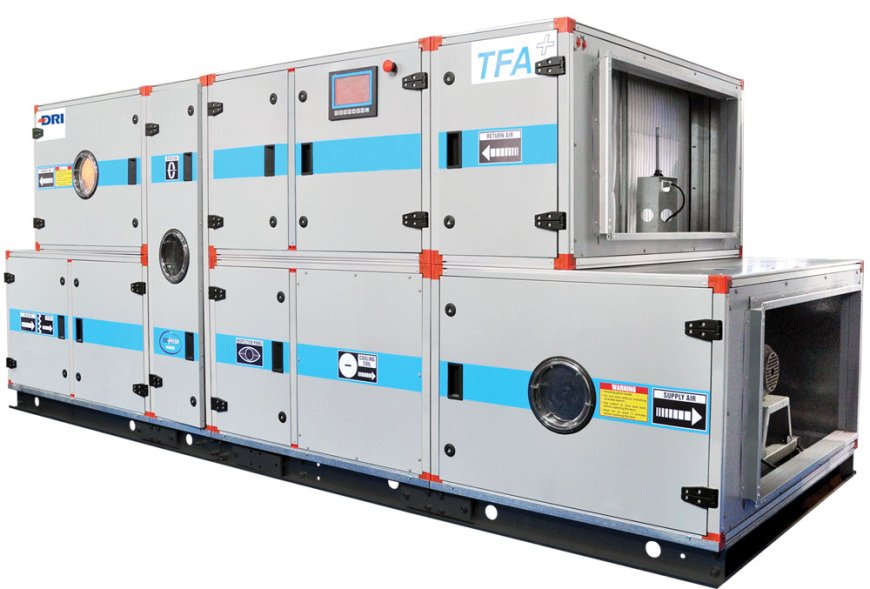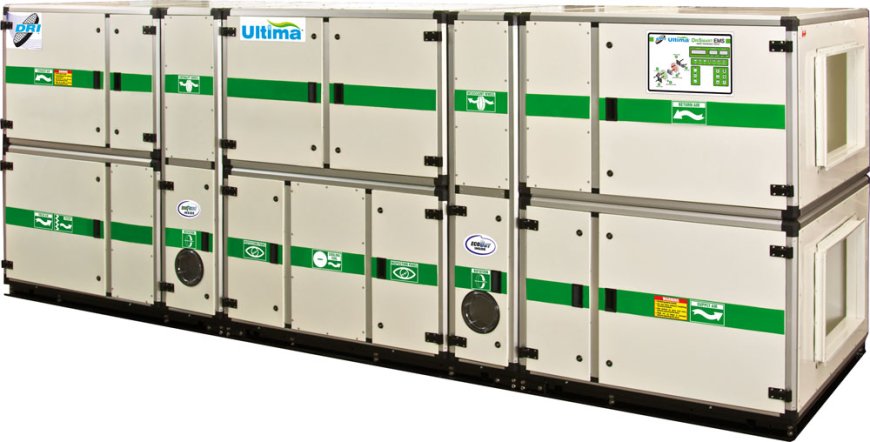All the products at DRI promote energy-efficiency and sustainability.
Green buildings are at an interesting cusp of development with the potential to drive the sustainable urban development of the country.

How is the green buildings segment evolving in the country? What are the latest trends?
Green buildings are at an interesting cusp of development with the potential to drive the sustainable urban development of the country. Given to the rapid urbanization, there is a rising demand for net-zero buildings to decrease the environmental impact of the traditional buildings responsible for excessive waste and a spike in energy consumption. In addition to this, the buildings are being invariably sought by the builders and constructors for their ability to drive energy efficiency, improve IAQ, and minimize waste consumption. Such green buildings go beyond eco-friendly practices and bode well for enhancing the quality of life at the same time. All the factors together are contributing to unprecedented expansion of the industry, where the green building market in India is expected to grow at a CAGR of more than 5% between the forecasted period of 2023 to 2028, as per the report by globaldata.com.
Looking at the promising prospects of the segment, there are numerous trends shaping the development of the buildings. Smart technologies such as data analytics, AI, etc., are making strong inroads into the sector to enhance the output of the buildings while monitoring their environmental performance efficiently. Along similar lines, Smart Building Systems (SBS) has been witnessing a surge in demand for its ability to conduct real-time monitoring aimed at driving energy efficiency and exercising thorough temperature control.
 Similarly, IoT is levelling up the performance of the facilities by optimizing resource utilization and goes a long way in automating functions. Altogether, the technology bodes well for enhancing the overall efficiency of the building. Along with this, Building Information Modelling (BIM) is also rising to the occasion, enabling accurate planning, design, and construction that improves resource allocation, energy utilization, etc.
Similarly, IoT is levelling up the performance of the facilities by optimizing resource utilization and goes a long way in automating functions. Altogether, the technology bodes well for enhancing the overall efficiency of the building. Along with this, Building Information Modelling (BIM) is also rising to the occasion, enabling accurate planning, design, and construction that improves resource allocation, energy utilization, etc.
What are your air quality and sustainability solutions offered for green buildings concept? How are your solutions helping the developers fulfil sustainability needs in green buildings?
DRI is at the forefront of providing comprehensive solutions for fresh air treatment, indoor air quality (IAQ), energy recovery systems, green buildings, dehumidification, and pollution control systems globally. It comes with a range of products and systems that significantly improve the air quality and sustainability of green buildings. Offering advanced HVAC solutions with the help of ERV, DOAS, TFA and chilled beams, all the products at DRI promote energy-efficiency and sustainability.
Our Treated Fresh Air Handling (TFA) systems minimize the energy consumption of the building in the process of ventilating the space. The systems come with the ability to improve the indoor air quality of the enclosed spaces, where they promote efficient airflow for achieving circulation of fresh air across the facility. This, in turn, comes in handy for uniform distribution of air within the space, thereby minimizing the excessive need to heat or cool the facility. Consequently, it plays a crucial role in reducing the load on the heating, ventilation, and air conditioning systems, significantly curtailing the energy consumption of the building. In addition to this, TFA is well equipped with energy recovery wheel which resides well for the recovery of both sensible and latent energy. Owing to this, it adds to the sustainability of the green buildings, where it augments the energy saving of the facility.
 Likewise, Chilled Beams, popularly known as room air recirculation devices, are utilized for cooling and ventilating the space to achieve the comfort of the occupants and furnishing good air quality at the same time. When working in tandem with DOAS, the Chilled Beams come with the proficiency to drive energy-efficient operation of the system. Moreover, the systems provide the most energy-efficient solution where they reduce the energy consumption by 20-25% as compared to the traditional systems.
Likewise, Chilled Beams, popularly known as room air recirculation devices, are utilized for cooling and ventilating the space to achieve the comfort of the occupants and furnishing good air quality at the same time. When working in tandem with DOAS, the Chilled Beams come with the proficiency to drive energy-efficient operation of the system. Moreover, the systems provide the most energy-efficient solution where they reduce the energy consumption by 20-25% as compared to the traditional systems.
DRI also offers Dedicated Outdoor Air Systems (DOAS), that makes use of dehumidification wheels to monitor the humidity levels in the room while achieving adequate ventilation. The system boasts patented Desiccant Wheels that does not require active energy to regenerate. Similarly, being well-equipped with enthalpy wheels, it amplifies energy recovery efficiency of the systems while minimizing the cross-contamination of the space at the same time.
Along with this, Energy Recovery Ventilators (ERVs) exercise significant energy savings in the process of maintaining quality IAQ of the space. Employing Eco Fresh Energy Recovery Wheels, the technology bodes well for sensible and latent energy recovery, translating to high energy transfer efficiency.
What are the challenges faced by developers and contractors in the construction of green buildings?
Though the prospects of green building look very promising, it comes with its own set of challenges in the form of regulatory frameworks, economic considerations, etc. The upfront cost of constructing a green building can be expensive, consequently resisting the adoption of net-zero buildings. Given to the sustainable materials, energy-efficient systems, and regulation process, there can be a stark spike in initial investment as compared to the traditional buildings. However, the long-term benefits in the form of reduced operational costs can balance out the higher cost of constructing green buildings.

In addition to this, the diverse regional standards can further complicate things and make it difficult to navigate the landscape smoothly. Considering that certain regions comply with LEED certification while others prioritize GRIHA or IGBC, it creates confusion among the builders. Further complicating things, with regulations evolving continuously that are subject to innovation in technologies, it can be considered a major challenge for long-term projects.
What are the further policy supports needed for the growth of green buildings sector?
In order to give the desired impetus to the sector, it is required that the government focus on devising a strong regulatory framework aimed at incentivizing green construction. Moreover, supporting it with policies that can create opportunities for businesses to invest in the sector can boost the prospects of green buildings. Promoting green financing can further improve the accessibility to green technologies, where lower interest rates, tax benefits, and subsidies can spur the adoption of green buildings.
With the air quality at stake due to various problems, what's the way forward to sustainable buildings and developments? What are your future plans?
With DRI always championing eco-friendly solutions, it is continuously involved in developing new products aimed at innovating and upgrading the offerings. Striving to come up with even more energy efficient solutions, it is very likely to curate game changing products in the dehumidification energy segment.







